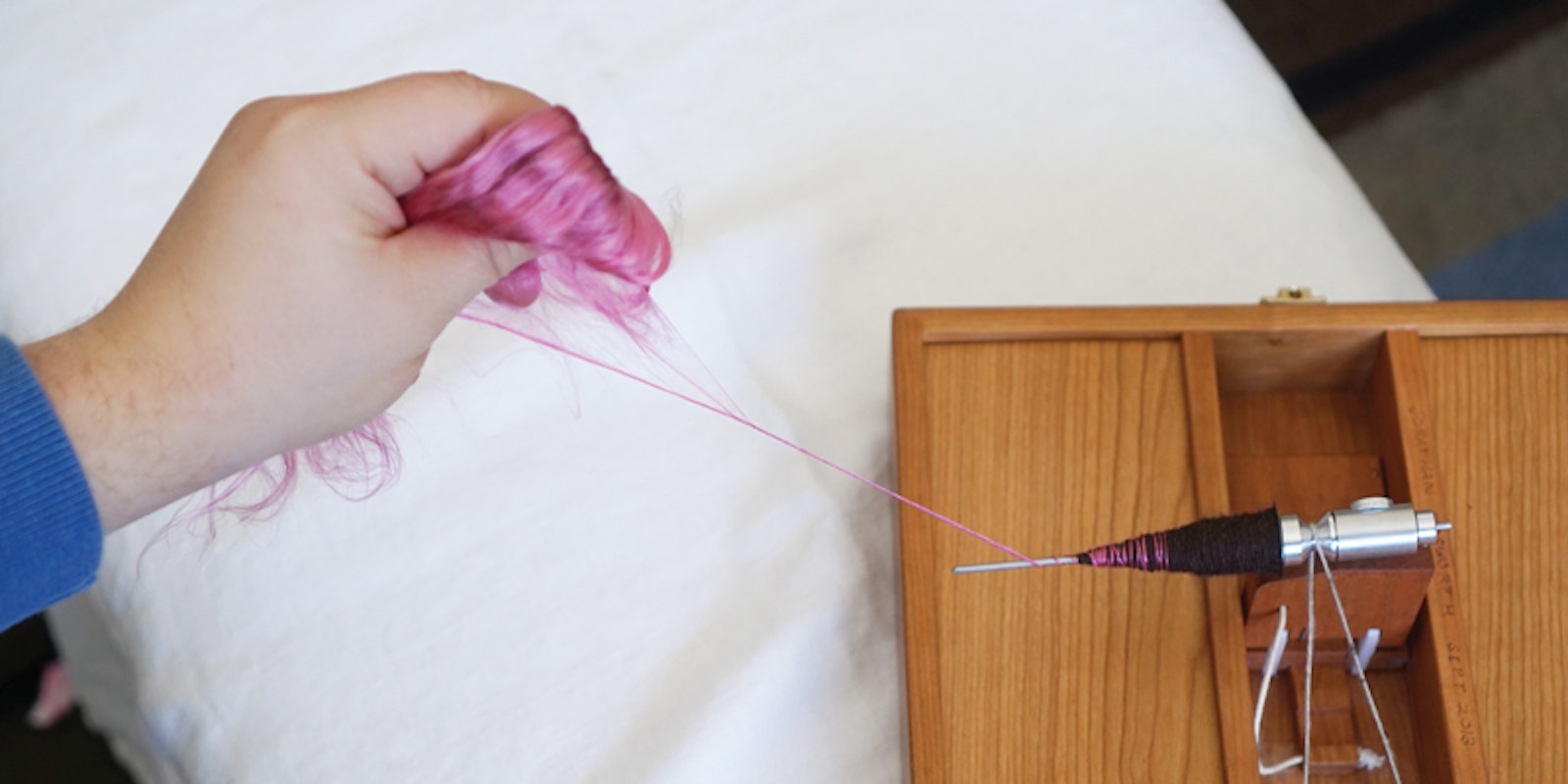Doesn’t 2016 feel like it happened a century ago? In the land of magazines, we begin planning a new issue about a year in advance, so Spin Off 2016 issues are a distant memory—but one worthy of revisiting to learn about fibers, preparation, techniques for spinning yarn, and more. Here are 5 of my favorite pieces of advice from the experts.
If you forget to make a plyback sample or reference sample while spinning, you can make one from singles that have rested—but not straight off the bobbin. Take a length of singles, allow or coax it to ply against itself, tie an overhand knot in the ends, and wash it. “The true balanced twist will be revealed when the sample is completely dry,” says Amy Tyler in “Ask a Spinning Teacher: Plying for Balance,” Winter 2016.
To spin your own leader on a supported spindle, spear the fiber with the tip of the spindle. “To keep the fiber from jumping off the top of the spindle, I wet it just a bit, which helps it stick to the shaft while I build up some twist,” says Heather Zoppetti in “Spinning Supported,” Winter 2016.
The best embroidery threads are overplied, but that ply twist may try to escape. “It is the main reason for one of the most helpful rules in embroidery: Don’t work with a yarn that is longer than twice the distance between your hand and your elbow,” says Judith MacKenzie in “William Morris: The Red House Embroideries,” Spring 2016. “As you pull it through the cloth, it will continually untwist, changing the stitch definition.”
Resist the temptation to stitch with long pieces of yarn. Judith MacKenzie cautions that the yarn’s twist will come out as it’s pulled through the cloth.
You can use a charkha to spin fibers other than cotton, but keep it fine. Devin Helmen offers two reasons in “Beyond Cotton: Exploring the Charkha” in Summer 2016. “Finer yarns need more twist, which the charkha will supply,” he says. The small storage capacity of a charkha’s spindle makes a difference, too: “While it is possible to splice yarn from many full spindles together, I find this to be inefficient.”
Confused about whether the arms on a Turkish spindle should face up or down? There may be a good reason for either. “Try it: arms up for supported and arms down for suspended,” says Judith MacKenzie in “Spinning in Turkey” from Fall 2016.
—Anne Merrow
To find more tips on spinning yarn, check out the 2016 issues ofSpin Off.
Featured Image: A charkha can spin so much more than cotton—like this silk top that Devin Helmen tried out. Photo by Zeus Carrete


